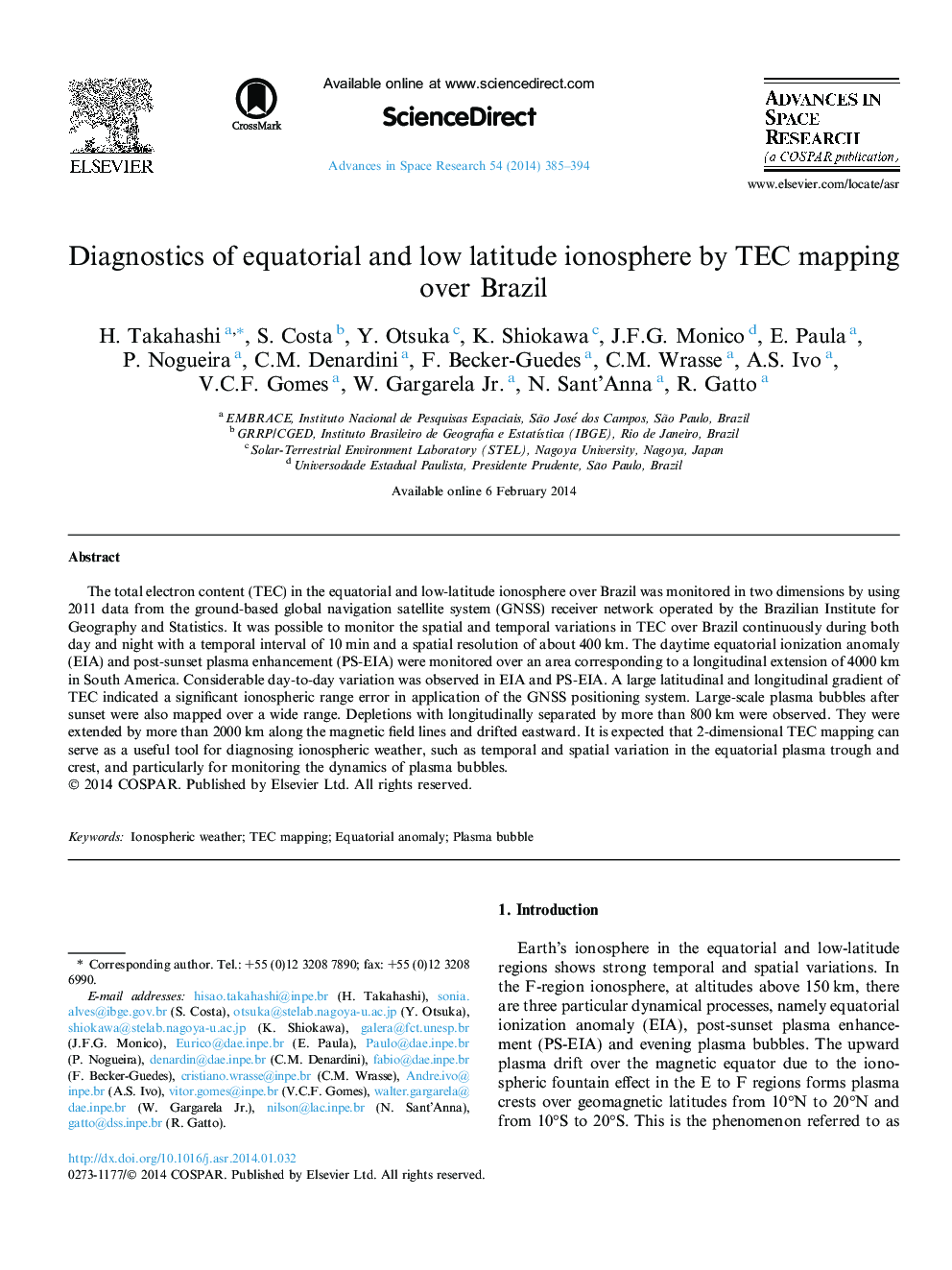| Article ID | Journal | Published Year | Pages | File Type |
|---|---|---|---|---|
| 1764902 | Advances in Space Research | 2014 | 10 Pages |
The total electron content (TEC) in the equatorial and low-latitude ionosphere over Brazil was monitored in two dimensions by using 2011 data from the ground-based global navigation satellite system (GNSS) receiver network operated by the Brazilian Institute for Geography and Statistics. It was possible to monitor the spatial and temporal variations in TEC over Brazil continuously during both day and night with a temporal interval of 10 min and a spatial resolution of about 400 km. The daytime equatorial ionization anomaly (EIA) and post-sunset plasma enhancement (PS-EIA) were monitored over an area corresponding to a longitudinal extension of 4000 km in South America. Considerable day-to-day variation was observed in EIA and PS-EIA. A large latitudinal and longitudinal gradient of TEC indicated a significant ionospheric range error in application of the GNSS positioning system. Large-scale plasma bubbles after sunset were also mapped over a wide range. Depletions with longitudinally separated by more than 800 km were observed. They were extended by more than 2000 km along the magnetic field lines and drifted eastward. It is expected that 2-dimensional TEC mapping can serve as a useful tool for diagnosing ionospheric weather, such as temporal and spatial variation in the equatorial plasma trough and crest, and particularly for monitoring the dynamics of plasma bubbles.
